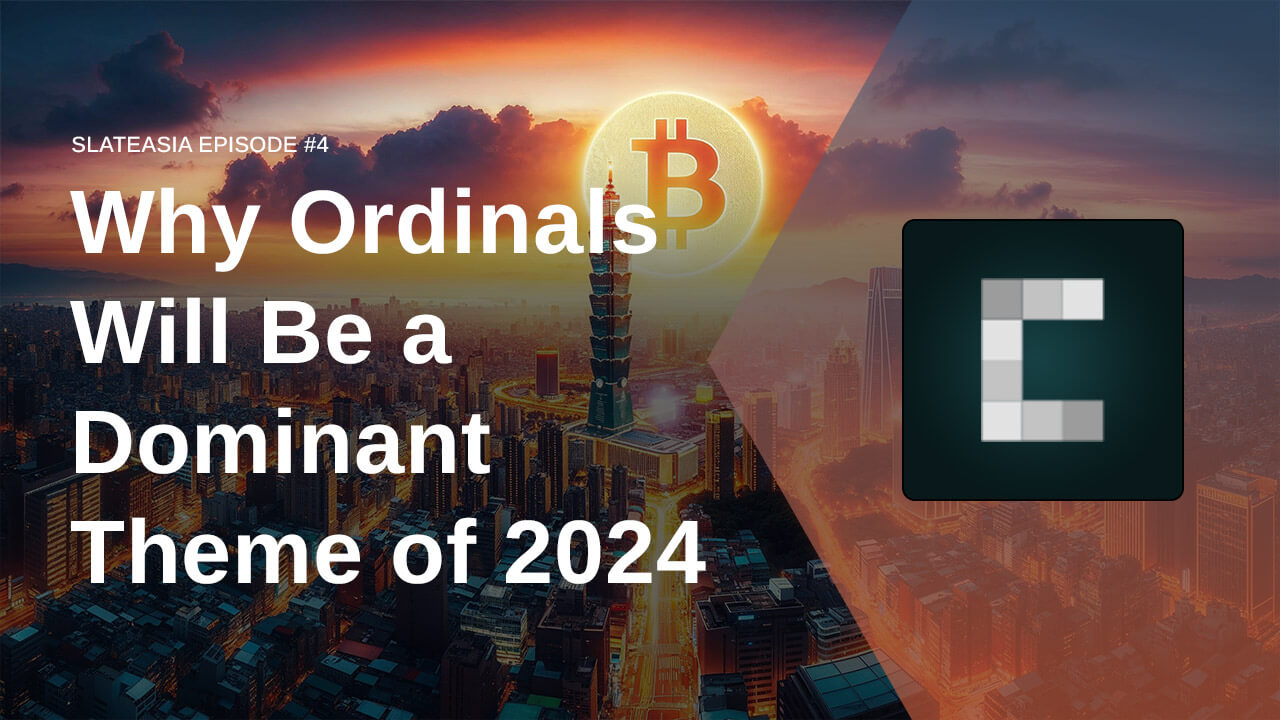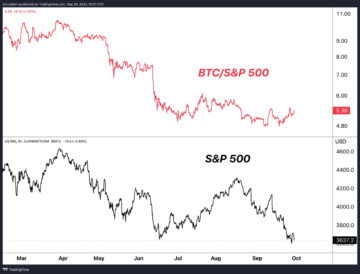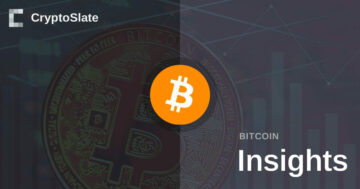
The recent episode of SlateAsia brought together prominent voices in the space to discuss the tumultuous start of 2024 for Bitcoin and the rising interest in Ordinals.
The podcast featured Liam Wright, Senior Editor of CryptoSlate, Nate Whitehill, the CEO of CryptoSlate, and Jason Fang from Sora Ventures. Their conversation centered on the SEC’s potential rejection of the Bitcoin ETF and the impact of Ordinals on Bitcoin’s network and future.
Bitcoin ETF Rejection: A Market Catalyst?
Nate highlighted an article by Matrixport suggesting that Bitcoin could reach $50,000 shortly. However, the narrative changed rapidly, with a subsequent report predicting the SEC’s rejection of the Bitcoin ETF, contributing to market volatility.
Jason, expressing a long-term investment perspective, saw the price drop as a potential entry point for investors, indicating a bullish stance on Bitcoin.
Ordinals: A new frontier for Bitcoin?
The discussion shifted to Ordinals, a novel feature on the Bitcoin blockchain. Jason provided a historical context, tracing the evolution from early attempts at NFT-like features on Bitcoin, such as color coins, to the recent resurgence of interest through Ordinals.
He emphasized the significance of this development, marking a departure from Bitcoin’s traditional use case of trading and speculation to a platform where innovative applications can be built.
Jason articulated why a developer might prefer to build on Bitcoin over Solana or Ethereum:
“If you believe that Solana or Ethereum is fast enough and you care more about speed and fees [than security], then you should NOT be building on Bitcoin. Bitcoin is the most secure network.”
Impact of Ordinals on Bitcoin’s network
Liam raised concerns about the growing mempool size and rising transaction costs on Bitcoin’s network due to the popularity of Ordinals. While acknowledging these challenges, Jason pointed out the increased network security and profitability for miners as potential upsides.
He also highlighted the shift in dynamics within the Web3 investment landscape, where retail investors often precede VCs in minting and acquiring new projects.
The future landscape of Bitcoin and Ordinals
Jason expressed optimism about the future of Ordinals, seeing them as a catalyst for a new wave of innovation and investment in the Bitcoin ecosystem.
He rejected the need for a layer-2 solution for Ordinals in the near term, arguing for the unique value proposition of Bitcoin’s security and robustness over speed and efficiency.
Conclusion: A bullish outlook for Bitcoin and web3
In conclusion, the podcast emphasized a bullish outlook for Bitcoin, fueled by the potential approval of a Bitcoin ETF and the fundamental value and real-world use cases emerging through developments like Ordinals.
This sentiment reflects a growing recognition of Bitcoin’s evolving role in the digital asset space, beyond just a trading asset to a platform for innovation and secure digital ownership.
- SEO Powered Content & PR Distribution. Get Amplified Today.
- PlatoData.Network Vertical Generative Ai. Empower Yourself. Access Here.
- PlatoAiStream. Web3 Intelligence. Knowledge Amplified. Access Here.
- PlatoESG. Carbon, CleanTech, Energy, Environment, Solar, Waste Management. Access Here.
- PlatoHealth. Biotech and Clinical Trials Intelligence. Access Here.
- Source: https://cryptoslate.com/podcasts/speculation-on-potential-bitcoin-etf-rejection-causes-market-stir-as-focus-shifts-to-ordinals-potential-slateasia-episode-4/
- :is
- :not
- :where
- 000
- 2024
- 7
- a
- About
- acquiring
- also
- an
- and
- applications
- approval
- article
- AS
- asset
- At
- Attempts
- BE
- believe
- Beyond
- Bitcoin
- Bitcoin Blockchain
- Bitcoin ETF
- blockchain
- brought
- build
- Building
- Building on bitcoin
- built
- Bullish
- by
- CAN
- care
- case
- cases
- Catalyst
- causes
- centered
- ceo
- challenges
- changed
- Coins
- color
- Concerns
- conclusion
- context
- contributing
- Conversation
- Costs
- could
- CryptoSlate
- Developer
- Development
- developments
- digital
- Digital Asset
- digital ownership
- discuss
- discussion
- Drop
- due
- dynamics
- Early
- ecosystem
- editor
- efficiency
- emerging
- emphasized
- enough
- entry
- episode
- ETF
- ethereum
- evolution
- evolving
- expressed
- expressing
- FAST
- Feature
- featured
- Features
- Fees
- Focus
- For
- For Investors
- from
- Frontier
- fueled
- fundamental
- future
- Growing
- Highlighted
- historical
- However
- http
- HTTPS
- Impact
- in
- increased
- indicating
- Innovation
- innovative
- interest
- investment
- Investors
- jpg
- just
- landscape
- Layer-2 Solution
- like
- long-term
- Market
- market volatility
- marking
- Matrixport
- Mempool
- might
- Miners
- minting
- more
- most
- NARRATIVE
- Near
- Need
- network
- Network Security
- New
- novel
- of
- often
- on
- Optimism
- or
- out
- Outlook
- over
- ownership
- perspective
- platform
- plato
- Plato Data Intelligence
- PlatoData
- podcast
- Point
- popularity
- potential
- predicting
- prefer
- price
- profitability
- projects
- prominent
- proposition
- provided
- raised
- rapidly
- reach
- real world
- recent
- recognition
- reflects
- Rejected..
- retail
- Retail Investors
- rising
- robustness
- Role
- saw
- secure
- security
- seeing
- senior
- sentiment
- shift
- shifted
- Shifts
- should
- significance
- Size
- Solana
- solution
- Space
- speculation
- speed
- stance
- start
- Stir
- subsequent
- such
- term
- than
- that
- The
- The Future
- their
- Them
- then
- These
- this
- Through
- to
- together
- Tracing
- Trading
- traditional
- transaction
- transaction costs
- unique
- use
- use case
- value
- VCs
- Ventures
- VOICES
- Volatility
- Wave
- Web3
- while
- why
- with
- within
- Wright
- you
- zephyrnet













